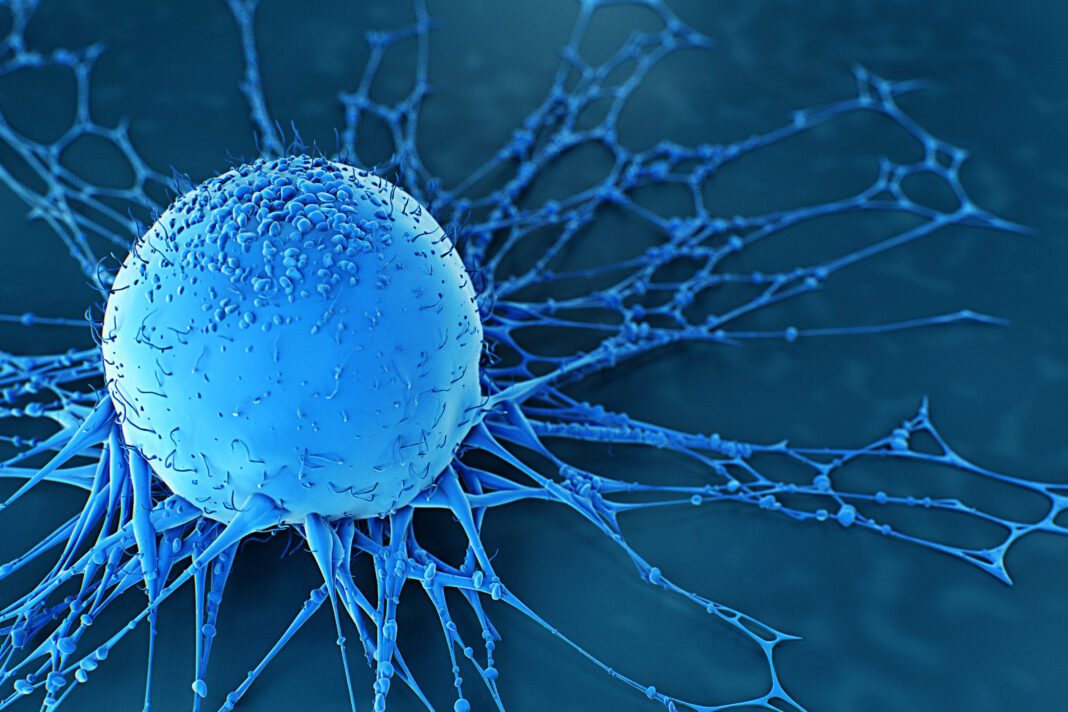Scientists at the University of California, Irvine (UCI), and the Italian Institute of Technology (IIT) have developed a new molecule, ALY101, that shows promising anticancer activity against a wide range of tumor cell types in mouse models of a common type of melanoma.
The findings, “Structure-based Design of CDC42 Effector Interaction Inhibitors for the Treatment of Cancer,” are published in Cell Reports.
“CDC42 family GTPases (RHOJ, RHOQ, CDC42) are upregulated but rarely mutated in cancer and control both the ability of tumor cells to invade surrounding tissues and the ability of endothelial cells to vascularize tumors,” the researchers wrote. “Here, we use computer-aided drug design to discover a chemical entity (ARN22089) that has broad activity against a panel of cancer cell lines, inhibits S6 phosphorylation and MAPK activation, activates pro-inflammatory and apoptotic signaling, and blocks tumor growth and angiogenesis in 3D vascularized microtumor models (VMT) in vitro.”
The researchers focused initially on blocking the interaction of members of the CDC42 family of GTPases with a key kinase, PAK1, which is amplified in breast, colon, and other cancers and active in the pathology of rare diseases such as neurofibromatosis and Ewing sarcoma.
“We identified a previously unknown PAK1 binding pocket present only in CDC42, and we used this pocket at the interface between both proteins to disrupt the interaction that would normally lead to PAK1 activation. By blocking this interaction, we can inhibit the excessive PAK1 activity that drives cellular changes that lead to cancer and other diseases,” explained Marco De Vivo, PhD, director of the Molecular Modeling and Drug Discovery Laboratory at IIT. “We used computer simulations of both proteins to design compounds able to bind to that pocket and modeled blockade of the interaction between both proteins using a range of simulated compounds that we ‘screened’ for in silico and then synthesized the most promising ones for further experimental tests.”
The compound ALY101 works by blocking the interaction, which normally converts PAK1 from an inactive to an active state.
“This compound and the effects of the drug on the tumor and its microenvironment has potential applications both as monotherapy or in combination regimens to reduce dose limiting toxicities of existing agents, or as a treatment for tumors that have developed resistance to other agents,” said Anand Ganesan, PhD, MD, professor of dermatology at UCI. “In a broader context, these studies provide a roadmap for the rational structure-based design of drugs targeting GTPase family member proteins, known to be an important, but difficult-to-target to treat cancer.”
“We are extremely pleased to see the publication of Dr. De Vivo’s and Ganesan’s work outlining the activity of ALY101,” said Mark Benedyk, PhD, Alyra president and CEO. “The integrated approach pursued by both labs has efficiently generated multiple compounds that block the CDC42/PAK1 interaction, validating our platform and similar projects are underway to address other small GTPase proteins outside of the CDC42 family. The significance of their discovery with regards to the potential treatment of cancer and neurofibromatosis type 2 cannot be underestimated.”


